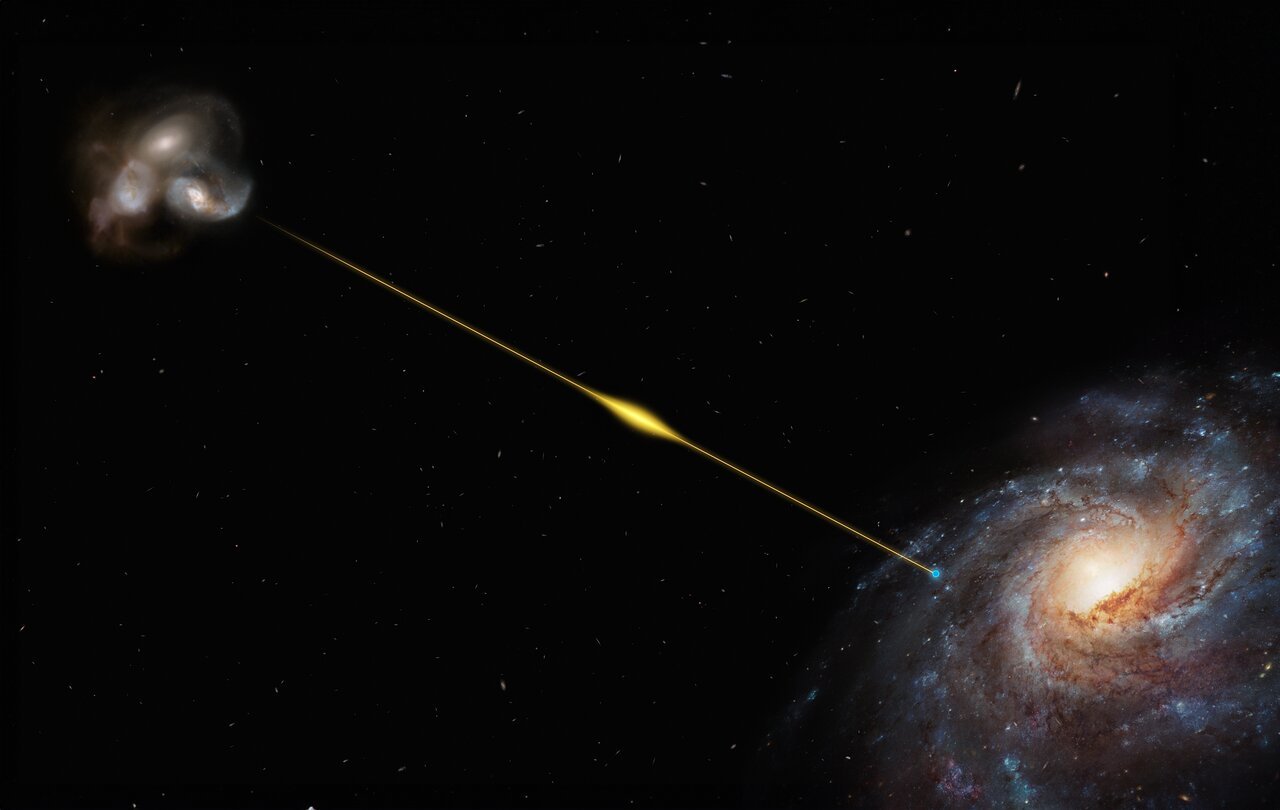
See What Happens When Stars Collide
A star in the constellation Norma appears to have been created when two stars merged.

Explore the Night with Bob King
Is Betelgeuse Fading Again?
Betelgeuse has dipped nearly half a magnitude since late January. Could it be headed for another Great Dimming Event? We also take a look at this spring's "other" eclipse.

Gotcha: Firm Evidence for a Neutron Star in Supernova 1987A
After decades of debate, James Webb Space Telescope observations provide firm evidence of a neutron star inside the 1987A supernova remnant.

Neutron Star "Glitches" Are Clue to Mysterious Radio Bursts
New observations of a neutron star in the Milky Way's center shed light on what makes mysterious fast radio bursts.

Mystery Objects Uncovered in Globular Clusters
Astronomers have found two different star clusters with an enigmatic source inside. Are these objects neutron stars or black holes?

Astronomers Watch Another Giant Star Dim
Turns out, Betelgeuse isn't the only giant star to undergo a "Great Dimming."

Cassiopeia A: A Festive Supernova Remnant
New near-infrared observations from the Webb telescope reveal intricate strands of debris from the exploded star.

Astronomers Find a Brilliant Explosion That Just Keeps On Exploding
A brilliant flash of blue light briefly outshined its host galaxy before fading away — but then it exploded again and again, shedding light on the nature of its source.

Dead Stars Come to Life This Halloween
The ghostly lights from two dead stars have stories to tell.

Radio Burst Breaks Distance Record, Challenges Theories
A highly energetic fast radio burst, which broke the distance record, provides a crucial test for theories of these events' origins.

Hubble Telescope Witnessed Intergalactic Flash of Light
An explosive flash of blue light briefly appeared in intergalactic space, thousands of light-years from the nearest galaxy.

Peculiar Pulsar Throws “Cosmic Cannonballs”
Astronomers think a city-size star that’s spinning faster than a kitchen blender is shooting out plasma torpedoes.

Fast Radio Burst Roundup
They’re powerful, they’re fast, and we aren’t sure about what causes them, but astronomers are closer than ever to understanding the source of mysterious fast radio bursts.

Surf’s Up: Waves Might Be Breaking on This Star
An unusual star system that brightens and fades every month might have giant plasma waves breaking on its surface.

Astronomers Find Strange Star Is a Powerful Magnet
Astronomers have found a star that has a magnetic field rivaling the strongest magnet humans have ever built — and it might explain the origin of highly magnetic cinders known as magnetars.

Webb Views the Ring Nebula and Earendel in a New Light
This week, James Webb Space Telescope reveals new details in the Ring Nebula and shows that the most distant known star isn't alone. Meanwhile, patient astronomers have collected 17 years' worth of images of the super-Jupiter Beta Pictoris b.

Astronomy in Pictures: The Birth of Stars and Planets
Images capture the birth of stars and planets in multiple results from space- and ground-based telescopes.
A Jekyll-Hyde White Dwarf
The white dwarf J2033 seems to switch rapidly between two compositions.

Astronomers Find Mysterious, Slowly Pulsing Star
An unidentified source has been beaming out a pulse of radio waves every 22 minutes since 1988.

Could Axions Help Fast Radio Bursts Escape a Magnetar’s Grasp?
New research proposes a way for fast radio bursts to escape the confines of a magnetized star and jet out into space — by getting help from theoretical particles called axions.
